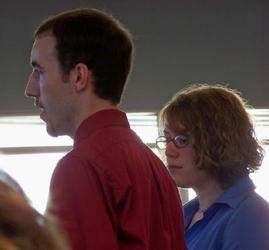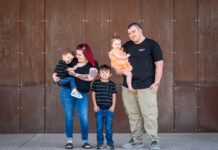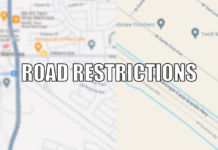
And the survey says? Maricopa City Council heard a presentation Tuesday evening from California-based Pat Davis Design Group regarding results of the recently concluded citizen survey and where the branding process goes from here.
And just what is the reason for branding Maricopa?
According to an overview of the branding, Maricopa’s brand statement will identify who and what the city stands for, along with distinguishing it from other cities in a unique way.
The branding campaign will help serve the community in guiding planning and decision making in response to community needs and desires, and advance economic growth by inspiring individuals and businesses to invest in Maricopa.
As Patricia Davis noted, there were just fewer then 4,000 collective responses and the survey was sent to every household in the 85239 zip code.
Direct mailing reached a response rate of 26 percent, telephone polling reached 502 residents and nearly 900 residents completed the online questionnaire. Males responded at a rate of nearly 42 percent, with females responding at nearly 56 percent. Those refusing to take part in the survey came in at 2.46 percent.
Some findings from the survey show that nearly all of the households surveyed were married or family homes. The majority of respondents had a minimum of a high school diploma or its equivalent with more than three-fourths having completed some college or obtained a degree.
A majority of respondents commute a distance ranging between 16 and 50 miles one way. The areas Maricopa residents commute to include Phoenix, Scottsdale, Mesa, Casa Grande, Chandler and Tempe. About one fourth of respondents work either within the city limits or have no commute at all.
The survey reports that the majority of residents are somewhat happy with Maricopa as a place to reside. Nearly 67 percent of respondents said they were in some way satisfied with the city. Only 26.51 percent of respondents indicated they were dissatisfied to some degree.
How can Maricopa improve itself?
According to respondents, nearly 12 percent would like to see road improvements, i.e. fix the roads/streets/safer roads. Nearly 4.5 percent wanted to see more shopping/retail development, 8.15 percent wanted improved traffic control and nearly 5.5 percent are hoping for more crime control; more than 4 percent wanted to see more quality education, nearly 4 percent would like to witness transportation development and nearly 4 percent believe there should be more growth.
When it comes to lifestyle characteristics, the top five leisure activities of residents, in ranking order, were dining out, watching films, sports and other physical activities, music and reading. The survey reports it is important to keep, or begin providing, city services that key into residents’ interests and provide retail outlets that can provide employment opportunities appealing to these personal interests.
The next step in the branding process is to hold a number of advisory sessions that will be made up of all walks of life. “We want to get more qualitative data,” Pat Davis Design Group Associate George Dimotakis said.
Councilman Will Dunn asked those from Pat Davis Design Group how they came up with the questions being asked.
“Half a dozen people must have asked me why they (surveyors) want to know if I have a DVR,” Dunn said. Dimotakis said questions like this would help to determine if bringing a store like a Best Buy or another certain type of establishment to town would be a good idea. “We wanted to know the technological status of the community,” Dimotakis noted.
Mayor Kelly Anderson asked Dimotakis and fellow associate Chloe Austin what they are trying to pull out of the advisory groups.
“We’ll be looking for information that the data can’t tell us,” Dimotakis added.
Photo by Joyce Hollis









![City gave new manager big low-interest home loan City Manager Ben Bitter speaks during a Chamber of Commerce event at Global Water Resources on April 11, 2024. Bitter discussed the current state of economic development in Maricopa, as well as hinting at lowering property tax rates again. [Monica D. Spencer]](https://www.inmaricopa.com/wp-content/uploads/2024/04/spencer-041124-ben-bitter-chamber-property-taxes-web-218x150.jpg)

![Alleged car thief released without charges Phoenix police stop a stolen vehicle on April 20, 2024. [Facebook]](https://www.inmaricopa.com/wp-content/uploads/2024/04/IMG_5040-218x150.jpg)




